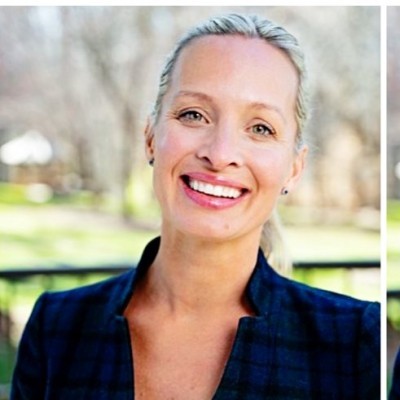Oct 18
2021
Nursing Shortage Began Well Before Pandemic; Problems Are Deeply Rooted

By Rebecca Love, chief clinical officer, IntelyCare.
The news media has done an excellent job of covering the country’s ongoing nursing shortage since the pandemic began. But one problem I have with the coverage is that most of the reports suggest the pandemic and the subsequent burnout suffered by nurses is to blame for the shortage.
Let’s be clear about what we in healthcare know all too well.
Years before February 2020, when COVID-19 began to spread across the globe, a growing number of care facilities around the country were chronically understaffed. The truth is the pandemic exacerbated and brought dramatic downward pressure on an already strained workforce. The issue came to the forefront because nurses were on the pandemic’s frontlines and in the spotlight. It shouldn’t have surprised anyone that the many ways the healthcare system has failed them – going back decades – were thrust into full public view.
Earlier this month, the St. Louis Post Dispatch published a story about the high turnover in area hospitals. At one hospital system, out of a 8,500-person staff, managers are losing 160 nurses a month, according to the paper. The story is much the same around the country. The Bureau of Labor Statistics estimates that the nation’s care facilities will be short 1.1 million registered nurses by next year. A problem is particularly serious for post-acute care facilities, which were seeing a pre-pandemic annual turnover rate of 128%.
Before the pandemic, shortages at facilities didn’t draw much attention because there was always some way to patch shifts together. Managers could hire per diem staff or travel nurses. Then, the pandemic struck and the backup resources administrators typically relied on dried up. With so many hospitals overflowing with COVID patients, few places possessed extra nurses.
In recent weeks, National Public Radio has attempted to trace the roots of nursing burnout. What too few reporters seem to understand though is that the factors driving scores of dedicated nurses out of the business now are the same ones that disheartened them for years. COVID was the bus that broke the camel’s back. Some of the most nagging issues nurses face include a lack of a seat at the table concerning hospital administration, the inability to effect change within their system, little investment into training and career progression, wages that don’t keep up with living costs. Most importantly, nurses are too often the scapegoat when staff shortages result in deaths. One of healthcare’s darkest secrets, though extensively studied and documented, is that when hospitals require nurses to care for too many patients, odds go up that a patient will die.
Five patients per nurse is the optimal ratio for general medicine floors in the United States. When facilities are understaffed, the ratio climbs to six, eight, even one-to-twelve at some of our rural hospitals. When someone deals with these acutely ill patients, they may have 12 IV drips going. If those medications run dry, the patient dies.
Just do the math. If a nurse is responsible for six patients, they can spend just 10 minutes per hour with each. If they have 10 patients, they can spend six minutes per hour. Just setting up one of those IV systems can take 30 minutes. This means nurses are chronically running behind, and the margin of error becomes slimmer and slimmer. When a nurse errs, a patient can be harmed, or worse, die. For the nurse, this kind of error can cause them to lose their job, their license, and in some cases they risk going to jail.
Then, there’s the hours. During the pandemic, there’s simply no let up. Many administrators demand overtime, and even when nurses go home, they’re phoned with questions and requests to work on off days. Again, this problem existed well before the pandemic. What’s different now is that the crisis eliminated all the pressure valves. Before March 2020, a string of staff shortages would eventually end. An exhausted nurse could get away for a couple days to relieve the pressure.
Not now. The tension builds ceaselessly. People can’t function exposed to this kind of pressure and trauma nonstop for two years – with all the chronically ill patients, level of acuity, long periods away from family and amount of death.
Even for the most dedicated people, living day in and day out in this kind of environment demoralizes the human spirit. Burnout is the wrong way to describe what nurses have suffered. That suggests the sufferer is simply mentally fatigued. What nurses have experienced is more akin to post traumatic stress disorder.
To fix these serious problems and keep more nurses at the bedside, healthcare must undergo a complete re-imagining of the nursing workforce. Fundamentally, the system will remain broken until we address the payer model for nursing – unchanged since the 1920’s. Currently, nursing expenditures come out of the same budget that pays for a piece of equipment used in a room: a bed, chair, or IV pump. If we keep rolling nurses into the room rate, they’re always going to be a cost. Businesses don’t invest in costs, they eliminate them.
Solving some of the staffing problems means handing over more control to nurses. In the 1980s, when HIV hit the U.S. and healthcare became overwhelmed, facilities asked nurses to take over staffing and things ran much smoother. Administrators must also invest in sophisticated scheduling and staffing software tools that provide nurses with far more freedom and flexibility to control their own schedules while meeting staffing needs more efficiently. I think the public would be shocked to see how outdated the technology is in many facilities today.
We can’t wait to attack these problems. Nurses are one of the cornerstones of quality healthcare. For the U.S. to provide the best care, the country needs people who are mentally and physically healthy, rested, and feel valued by their employers.